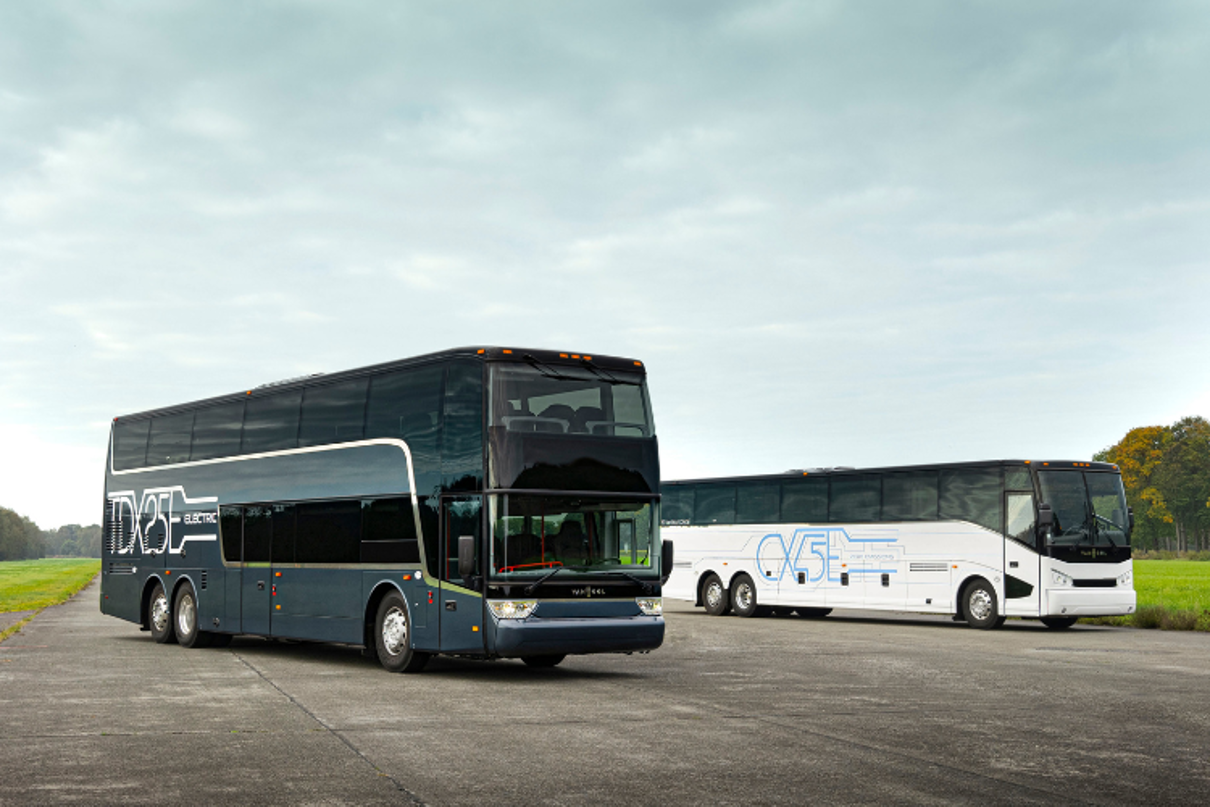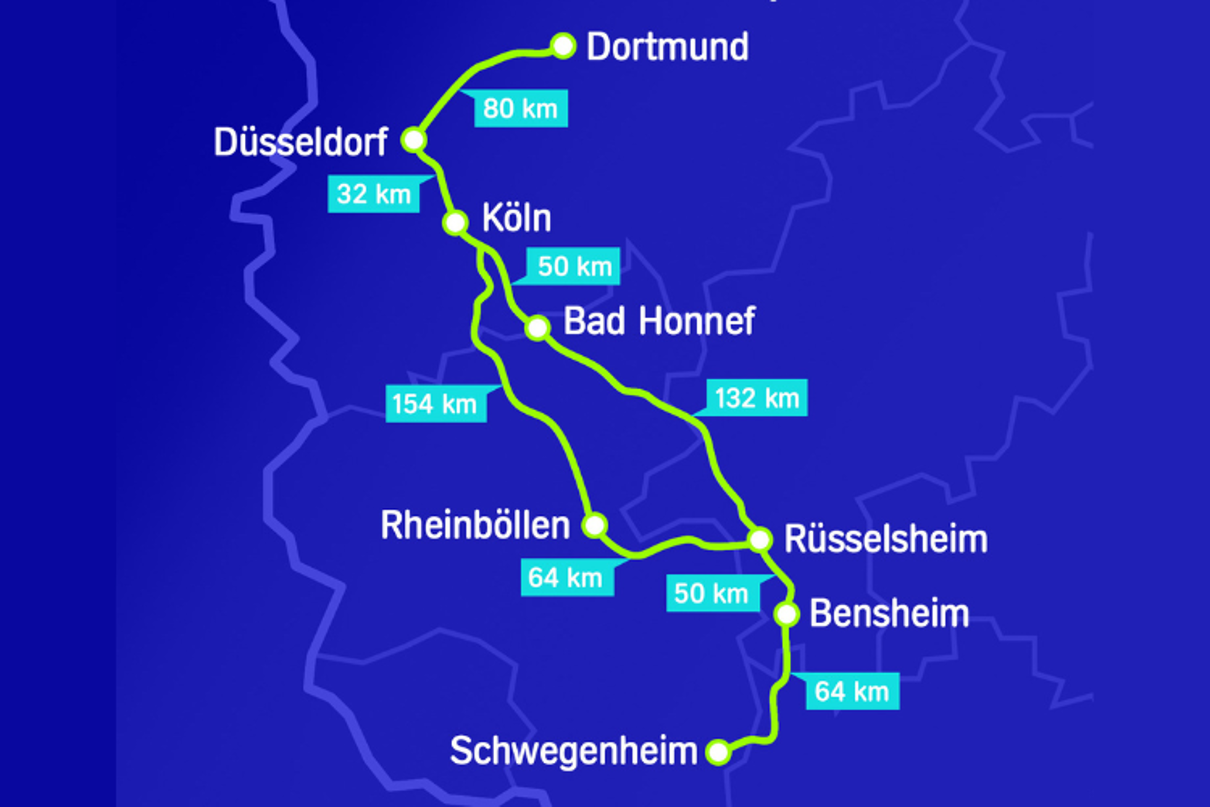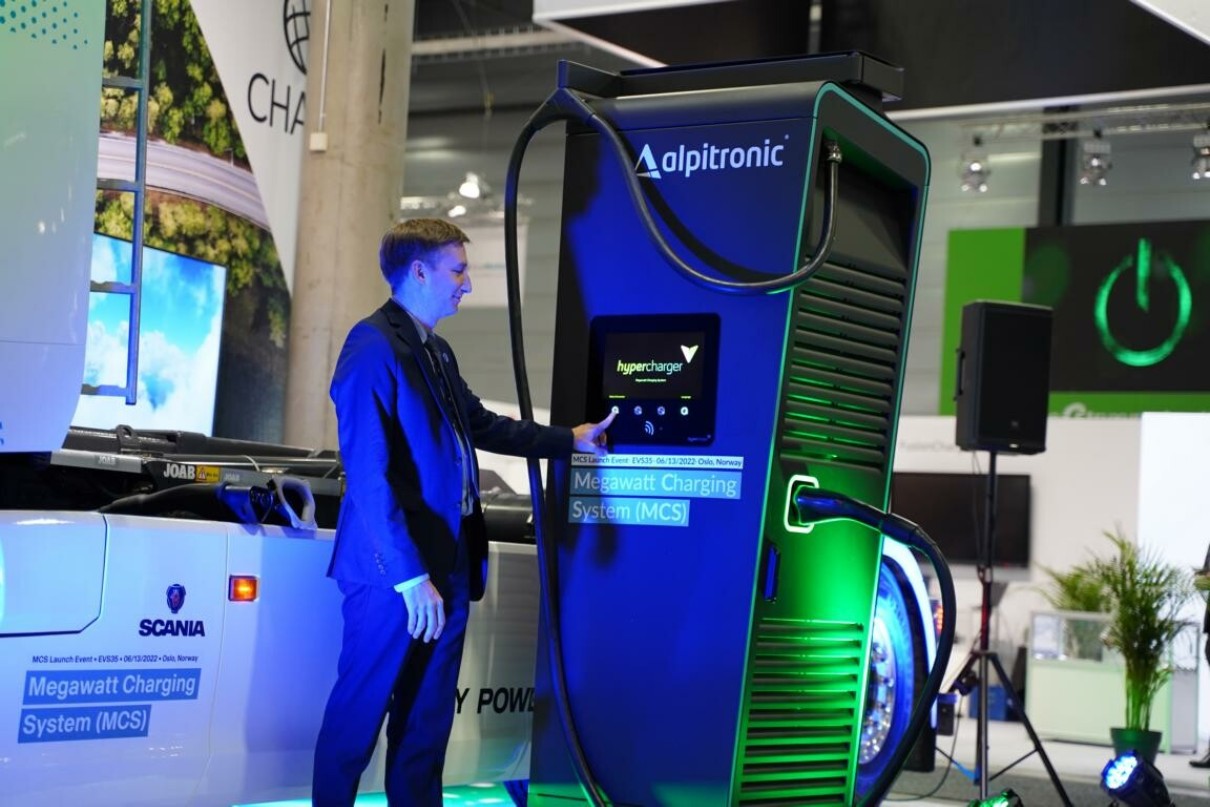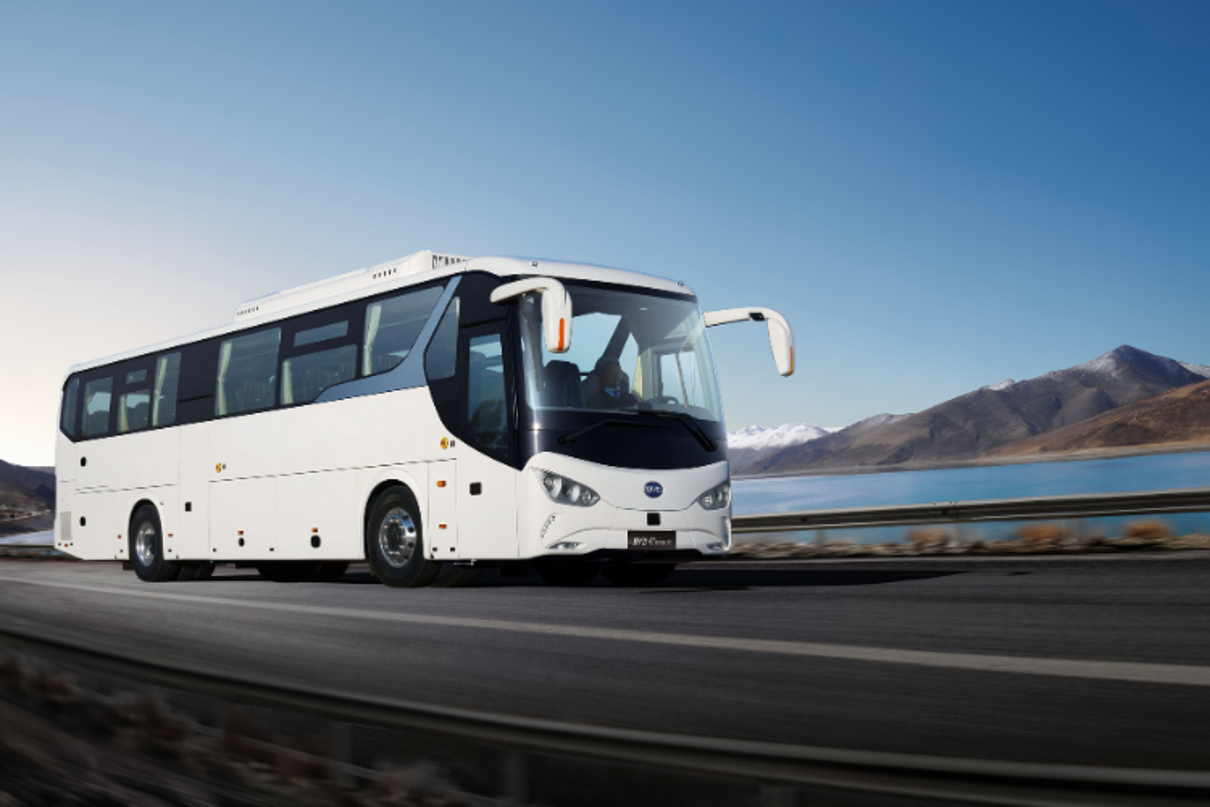Page content
How the e-coach market can gather pace
Guest article by Claus Bünnagel, Editor-in-Chief, busplaner
Later this summer, MAN will be offering a glimpse of its future strategy as regards the electrification of e-coaches. Manufacturers such as Daimler are already set to go too, while corresponding vehicles from other companies including Van Hool, BYD and Yutong are already operating on the roads.

Van Hool e-coaches are already operating in the US. Image: Van Hool
Autobahn areas for charging utility vehicles are being built
The first tentative steps are currently being taken on the 600-kilometre long, extremely busy haulage route of the Rhine/Alpine corridor, which among other regions connects the Rhine/Neckar and Rhine/Main areas with the metropolitan region of the Rhine/Ruhr. In future, eight 300 kilowatt charging points by Aral pulse between Schwegenheim (southern Palatinate) and Dortmund will supply a 45-minute charge of green electricity for e-HGVs and e-coaches, permitting a range of up to 200 kilometres.

Charging points for e-HGVs and e-coaches are now being installed on a first stretch between the Ruhr and southern Palatinate region. Graphic: Aral AG
Energy supply – the real issue
However, establishing a charging infrastructure initially along the main traffic arteries and later on in every region around Europe will take many years to complete. Installing charging points in motorway service areas and expanding EV fleets may seem a challenging task overall, but it is feasible by 2035. The big issue is connecting to the grid. While, in terms of cost, that represents only a fraction (5 to 10 per cent) of providing the charging infrastructure, what is much more expensive is the installation of charging points at the hub itself, at a cost of 300 euros per kilowatt charging capacity for MCS chargers. On the other hand, connecting to the grid entails a long planning and implementation phase.

Launch of the CharIN MCS charging system last year. Image: CharIN
In many cases, the complicated step of connecting to a medium-voltage grid may not be sufficient. The ideal solution then is to connect to a high-voltage grid via a separately constructed substation. Depending on the cable lengths required, between 2 and 10 kilometres, and should a transformer be needed, the cost is between 5.86 and 16.82 million euros, with the substation alone costing 3.2 million euros. The process of connecting to a high-voltage grid can easily take up to ten years. In order to avoid this and in order to get by with connections supplying a maximum of 20 MVA (megavolt-amperes), motorway service areas could in future additionally provide charging management and/or backup batteries.

In the years to come we will be seeing e-coaches on European highways too. BYD is already operating them in China. Image: BYD
Conclusions
There is an extremely urgent need for policymakers, motorway services, network operators, utility companies and manufacturers of fast chargers and EVs to cooperate in a structured way to establish robust plans for setting up a forward-looking charging infrastructure on German autobahns for e-coaches and e-HGVs. To do so only when the first vehicles are operating in two to three years’ time would be too late. In particular, solutions need to be long-term in order to avoid spending repeatedly in the same areas.


